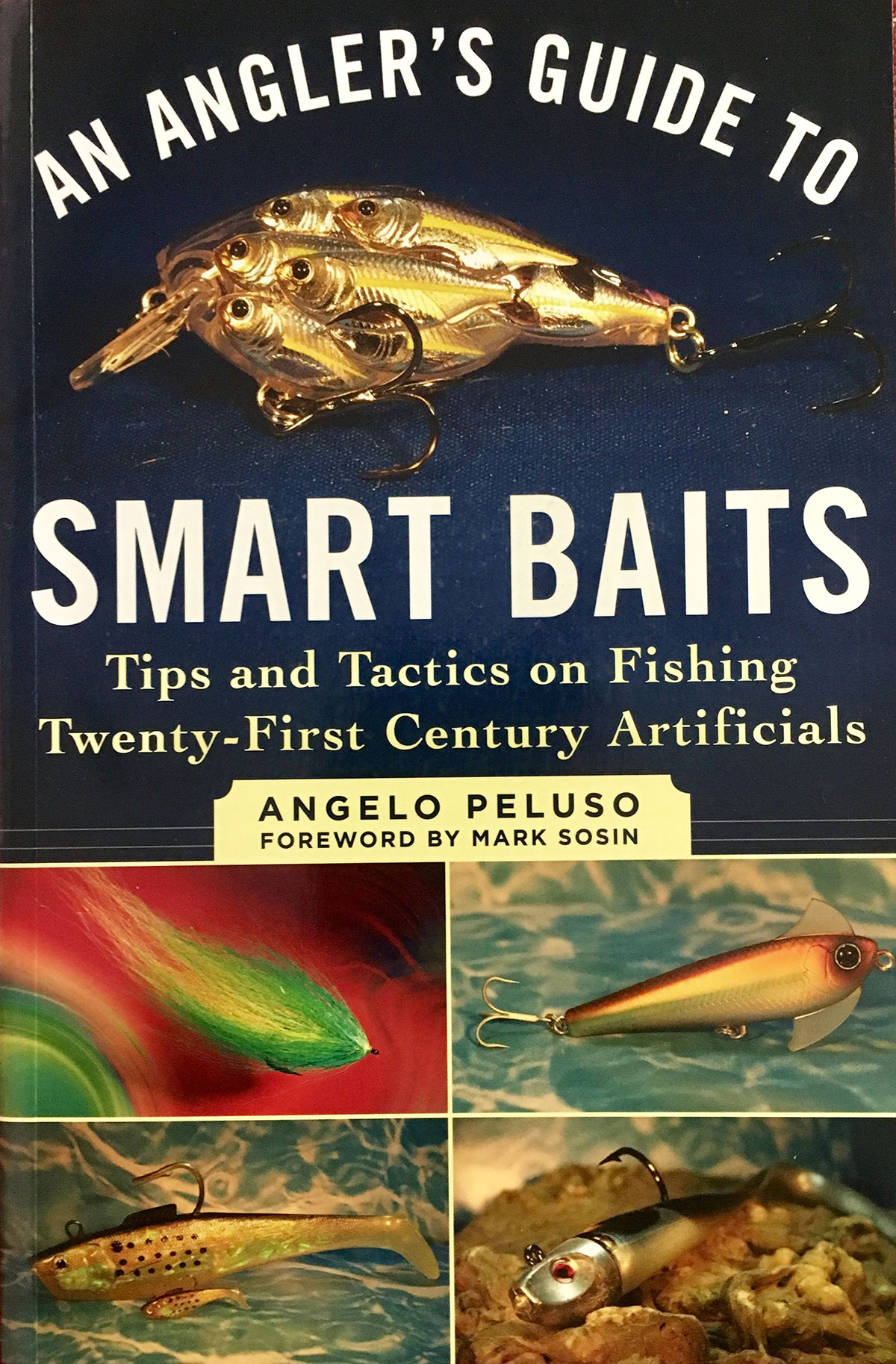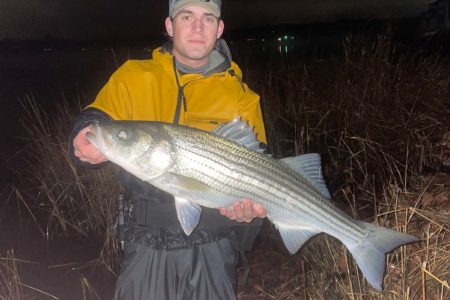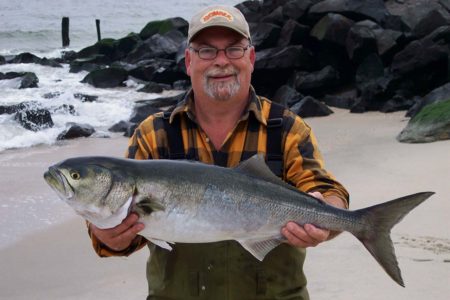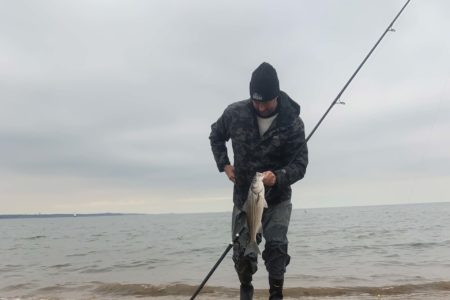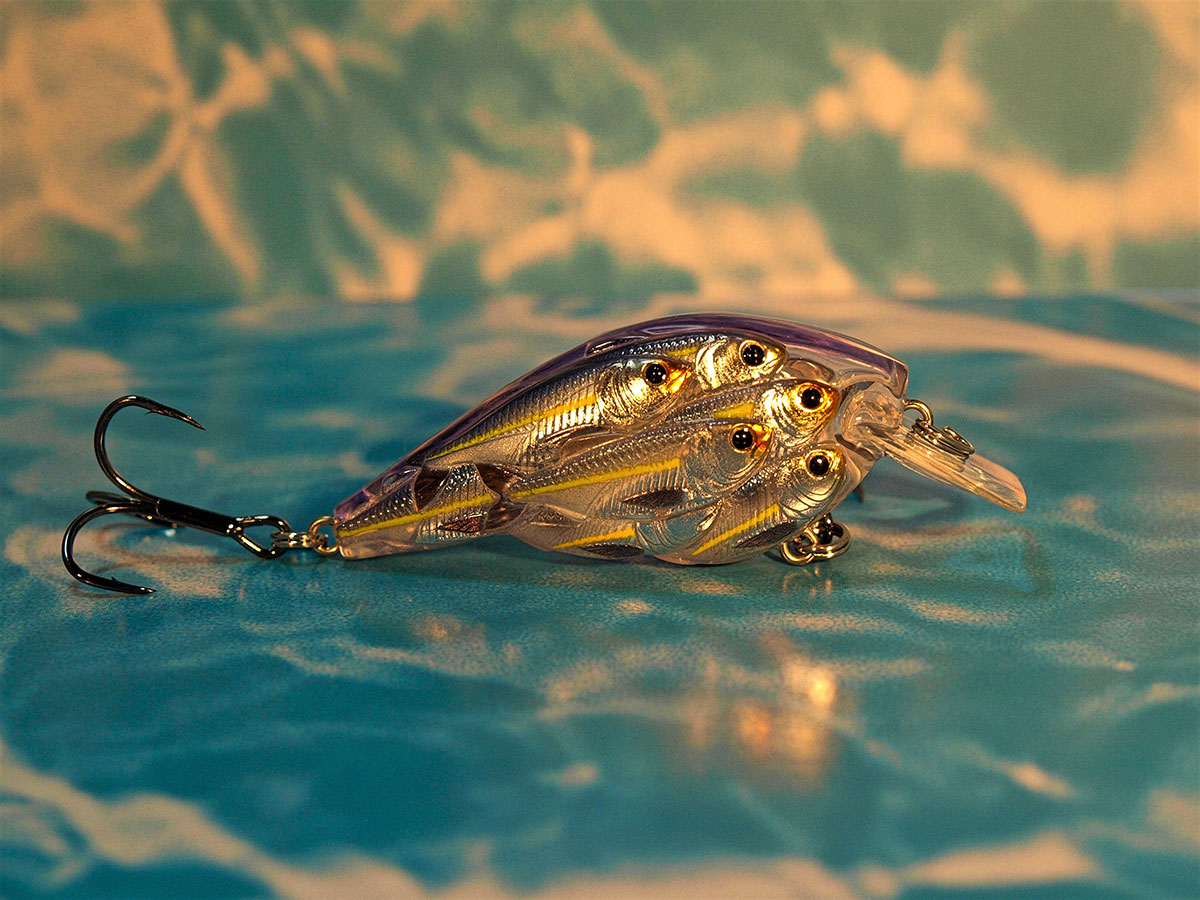
How smart are our baits becoming?
In the world of recreational sport fishing, there are some parallels between smart technology and contemporary fishing baits. Modern fishing baits are technologically superior to any lures that have ever been presented to fish. Some of those enhancements are attributed to the materials used in lure construction, like hi-tech, durable plastics, acrylics and other polymers, and new-age finishes that give impressions of life. Hooks are now laser-sharpened to the finest and strongest points possible, and some baits anatomically replicate actual prey in appearance and movement. The contemporary improvements of modern-age lure manufacturers who apply a new level of science to the design of their artificial baits have indeed taken fishing to a higher level.
Evolutionary
Throughout the evolution of recreational fishing, artificial baits have been designed and fabricated to simulate the general size, shape, and movements of natural prey. That model works well when fish are in a positive and active feeding mode. Today’s high-tech “smart baits” have taken that concept one very significant step further. Their designs and materials work in concert to “stimulate” fish to feed when they are in either neutral or non-feeding feeding states of behavior. Think about the possibilities. You arrive at your favorite fishing hole to find that the fish are off the feed, and you have a limited amount of time available for your outing. What if you could actually turn the fish on and get them to feed when they otherwise wouldn’t? That scenario is not far from what many of today’s high-tech hard and soft baits can accomplish. Cutting-edge lure companies are achieving that result with their baits by precisely targeting key fish senses that are part of feeding behavior driven by scent, vibrations, sight, taste, and feel.
The goal of a smart bait is to pinpoint the bite-triggering mechanisms in fish and motivate them to strike the lure. In practice, some of the more sophisticated soft plastic baits can attract a fish via sight, movement, or scent, and have that fish bite something that has a natural taste and then hold on to the bait longer due to a texture and feel that replicates a real food source. The combination of those factors leads to more interest in one’s baits, more strikes, and fish that hold baits longer to ensure solid hook-ups. Within the realm of hard plastic baits, movement, sound, and visual appeal have all been enhanced by the application of state-of-the-art engineering and scientific testing. Most manufacturers are now aggressively marketing baits referred to as reaction baits. Fundamentally, those baits are designed to elicit a reactionary response. That behavior can come in the form of attraction, more aggressive strikes, greater willingness to hold a bait once it is mouthed, and ultimately, putting fish in a feeding frame of mind when they would not naturally be inclined to eat. The method by which this is achieved is engaging the various sensory receptors of fish; physiology drives lure design.
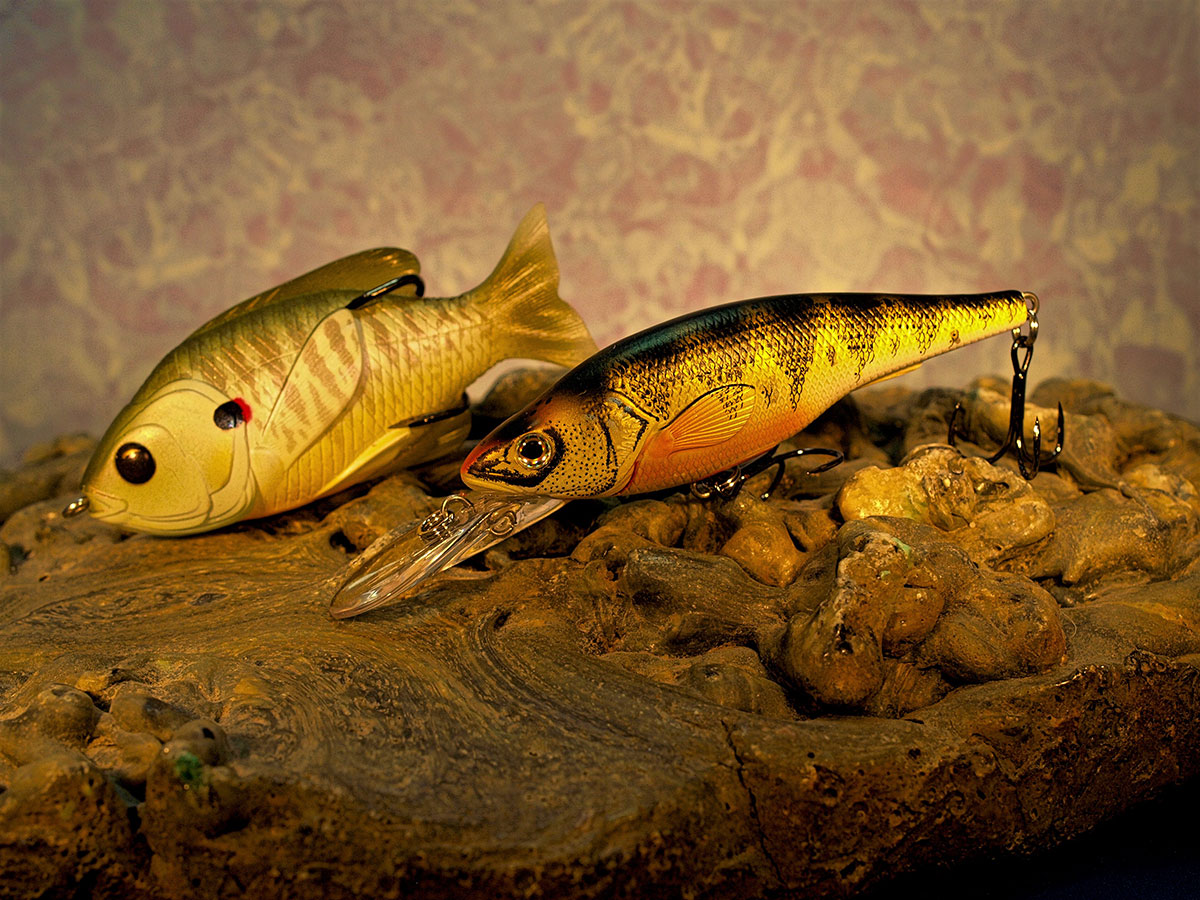
Appeal To The Senses
If you want to stimulate a fish to strike your bait, you must first appeal to its sensory receptors. Learn how fish react to the environment through their network of senses, and you will learn how to motivate them better to accept your offerings. In general terms, fish have the ability to sense their world by acquiring critical bits of data from their watery environment. Physiologically, fish have many of the same senses as humans and other animals. Fish can see, touch and feel. They can hear through vibrations and ‘smell’ and ‘taste’ through chemical receptors. Through a unique sense of electro-reception, some fish, like sharks, also have the ability to sense electrical impulses given off by distressed prey and other fish.
Through years of evolution, fish have developed a keen sense of sight. Fish use that sense much the same way as humans use their sense of vision. Through their sense of sight, fish find food, avoid predators, find spawning mates, and even seek out shelter. From an angler’s perspective, a fish’s vision is a critical sense in finding food. Fish also have the ability to see contrasting shades, to see colors, and to see in low light conditions, aided by a network of rods and cones. The obvious connection between sight and artificial baits is that what a fish can see will often get their attention and result in further investigation. From an angler’s perspective, a fish’s vision is a critical sense in finding food or artificial replicas of a food source.
Fish also have the ability to “smell” via chemical reception. Through an arrangement of nostrils and an olfactory rosette, fish can detect and distinguish chemicals, often in minute quantities. In a much purer sense, fish can taste through taste buds in their mouths, on their lips, tongues, and faces. Some fish – like catfish – are equipped with barbels and whiskers that have feel and taste functionality. Carp are another example and utilize highly sensitive senses of smell and feel to find food and feed. It is a fish’s sense of smell that is often engaged first and attracts it to a food source.
Fish have internal ears and a lateral line that aids in the process of hearing and feeling through vibrations produced in their environment. The lateral line is especially valuable in enabling a predatory fish to sense and feel the presence of prey and other fish. Through rows of neuromasts (clumps of receptor cells), the lateral line helps fish navigate, void other fish and objects, maintain contact with other members of a school, and locate prey. The lateral line is an important element in a fish’s ability to precisely locate food. It can detect disruptions in water, like ripples that are made by struggling prey, and relay those to the brain through electrical impulses and unique nerve fibers. For the angler, baits that replicate those vibrations provide an added edge in attracting strikes.
Cutting Edge Smart Baits
Many of today’s leading manufacturers of plastic baits and fish-attracting scents have paid particular attention to the physiology of fish sensing mechanisms and have applied that science to the development of new products, taking the concept of smart baits to the edge of modern technology. The technology and chemistry associated with those baits involve unique formulas of natural ingredients, known through scientific research to attract and arouse fish to feed by releasing “feeding pheromones.” Fundamentally, pheromones are chemical stimuli that trigger a number of natural responses in animals. Pheromones play a vital role in fish physiology and behavior, from the process of reproduction and migration to fear, aggression, and behaviors associated with feeding. Specific pheromone formulas have been developed to increase the aggressive feeding behavior of fish by stimulating their natural instincts to feed. The most predominant pheromone formulas in use today are designed to trigger reactions based on fear, aggression, and feeding behaviors.
In the most fundamental way, these new attractants replicate the scent of a food source: baitfish, worms, crustaceans, mollusks, or any other preferred prey from which scent can either be extracted or replicated. It is a simple yet ingenious concept: create the scents that represent the food that fish actually eat. At the opposite end of the spectrum, the most advanced use of attractants involves the transfer of pheromone-based scents in the form of liquid mixtures in which the plastic baits are bathed. Scents can either be infused into the plastic as an integral part of the bait or contained in a liquid mix that the baits are soaked in. The latter scenting method seems to produce better results since the mix can be refreshed or “re-charged,” and additional applications of scent can be applied to the baits as they are fished. Most manufacturers offer sprays or soaking mixtures that can be applied to plastic baits as needed. The application of scents can even enhance the appeal of natural baits, live or cut. The reason is that fish have protective mechanisms that can help disguise their scent by reducing the escape of bodily substances, which enables detection by predators. Applying scents to natural bait can improve and boost its effectiveness by removing masking mechanisms and allowing predators to sense the bait with greater intensity.

Soft Bait Applications
Nowhere is this sense of appeal more prevalent than in the world of soft plastic baits. Looking at the current landscape of plastic baits, we see a wide variety of artificials that have been designed to appeal to most all fish senses. Determining when, where, and how to apply these baits to various fishing situations will enhance one’s ability to consistently catch fish. One of the very first plastic baits to gain in popularity was the plastic worm used for largemouth bass. While the worm had a simple design, it proved to be one of the most versatile baits to hit the recreational fishing market. Depending on its rigging, it could be fished throughout the water column. Initially, it was offered in a natural worm-like coloration, but eventually, the colors were expanded to an abundant array that matched the spectrum of light conditions from the surface to moderate depth levels. For the most part, the first plastic worm was a visual bait. Its soft texture was agreeable to bass that would hold onto it longer and actually move off like it they would with a natural bait. This led to better hook sets. The worm’s success in freshwater grabbed the attention of saltwater anglers, and in the early 1970s, it became a popular bait along the East Coast for weakfish, sea trout, and other species of the brine. From the early roots of ‘Crème’ and ‘Jelly’ worms, an entire industry of plastic baits was spawned. Over time, the worm was modified to appeal not only to a fish’s visual sense but also to the ability to detect sound through the addition of inserted rattles and to the sense of taste using simple and natural scent additives. Salt-impregnated baits and those bathed in anise, licorice, and garlic scents certainly did motivate strikes, but those additives were more masking scents than bite stimulants. Scents applied to those early, non-absorbing plastic baits diffused rapidly, their effectiveness diminishing quickly. More than four decades later, the variety of plastic baits can be overwhelming to the typical angler, the science of their designs fascinating and their effectiveness astonishing.
Plastic baits run the gamut from fish fry sizes of 1 inch in length to eel sizes of 14 inches, and all variations sizes between. Plastic baits take the form of swimbaits, jerkbaits, stickbaits, paddletails, and tubes, including but not limited to grubs, minnows, rain bait, shad, belly strips, trailers, shrimp, crawfish, lobsters, worms, flatfish, frogs, lizards, sand eels, and an assortment of aquatic and airborne creatures that fish feed on. Infinite variety is one of the benefits of soft plastic baits. In essence, the plastic molding process can replicate just about any food source that swims, crawls, or flies. With rigging variations and the application of variable weight, plastic baits can be effectively fished from top to bottom in the water column. The range of possibilities is best exemplified with the example that one can throw a weedless and weightless creature imitation into the lily pads for largemouth bass or use a heavily weighted 10-inch jigging swim bait for cod in 220-feet of water. That range defines the meaning of versatility.
Hard Bait Ingenuity
Hard baits are also designed with built-in intelligence. The way in which a plug moves to displace water affects how that plug transmits sound waves to a fish’s lateral line. The realistic swimming action of the bait is a result of the proper relationship between shape, length, and the lure’s opposing forces against the water. To achieve this, lure designers closely study how fish and bait move and the way they propel themselves and use propulsion to swim. Another critical element in lure design is shape and balance, which must work in concert. The turbulence created by that balance of dimensions influences water pressure and causes the bait to move one way and then the other. The hardest thing for a lure manufacturer to understand and replicate is what fish actually feel and sense when stimulated by a particular bait. The more a hard bait can excite the senses, the greater its effectiveness. Contemporary smart hard baits employ a variety of design techniques to scientifically attract fish: ribbed and segmented bodies that emit vibrations; body patterns that change color; hydro-dynamically engineered lure bodies that move with the precision of an actual baitfish; light reflection to stimulate sight responses; frequency tuned sound devices; and even lures and devices equipped with built-in light-emitting capabilities that generate color specific to the depths fished.
| MORE ON SMART BAITS |
| Interested in getting even smarter on these types of baits? Take a look at the paperback book An Angler’s Guide to Smart Baits: Tips and Tactics on Fishing Twenty-First Century Artificials. The 224-page read covers materials, technique, purpose and location of modern day smart baits.
|
The array of today’s hard baits is amazingly broad for both freshwater and saltwater gamefish. Lures now on the market are versatile and, in many ways, designed to target specific behaviors of gamefish and the baitfish they pursue. Modern hard plastic baits are revolutionary in their action, their appeal to the sensory networks of fish, the use of realistic finishes, and the way in which they can be fished throughout the water column. The contemporary concept is to engineer lures that can stimulate multiple senses with fish as the bait is being retrieved and manipulated. The goal is to elicit not only feeding strikes but reaction strikes as well once a fish is aroused by the action of the bait. Predatory fish depend heavily on their sense of sight to home in on their prey. Even when sound or smell is the first of a fish’s senses to kick into gear, it is usually the sense of sight that seals the deal in the end game of the stalking prey. Most gamefish are sight feeders, but their other senses, when stimulated, will guide the predators to within range of their prey. Fundamentally, these new hard baits will attract fish via sound, motion, visual appeal, and, in some instances, smell. Popping noises can be created during the retrieval. Rattles can be installed into the interior of plugs to generate a constant sound when the lure is in motion. Design techniques can allow for a range of motion that goes well beyond the standards of floating and sinking.
One of the most innovative design features of modern hard baits allows for the lures to both descend and then suspend in the water column. This capability has significant value in that it allows the angler to precisely and methodically fish a substantial amount of vertical water and then manipulate the lure within the zone in which fish are found. Suspended freshwater bass are a typical target of this style of fishing, but even saltwater gamefish will hang in the water column where prey species are also present. A lure that can be consistently fished in that zone will yield more strikes. Another example of that kind of versatility is the timeless bucktail, which today is a far cry from the bucktails of old. What was once a simple leadhead on a hook with bucktail tied in on the shaft has transformed into a modern work of art. Builders of bucktails now use realistic heads, laser-sharpened hooks, 3-D and holographic eyes, and natural or synthetic materials for tails. Some bucktails are now tied to replicate various fly patterns, creating the possibility of imitating a wide range of natural baits. In their most primitive form, bucktails are still effective baits, but by incorporating modern materials and more hydrodynamic concepts into their designs, these baits have transformed into “smart” bucktails.
One major reality with fishing is that no matter how effective or “smart” a contemporary artificial bait is, the key variable in the equation is the angler acting to exert influence on the line and lure to make it behave in a natural and realistic way. The sophistication of smart baits gives the angler a major advantage over the fish species they target. These baits will work in concert with one’s fishing skills to dramatically increase the consistency of the catch.
